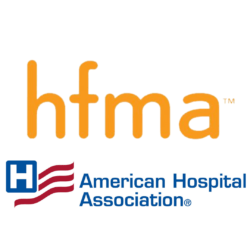July 27, 2021

Chadwick Annual Synthesis: A LOOK INSIDE June 2021 Citi/AHA/HFMA Virtual NFP Investor Conference
Sunrise After the Storm
The following is a summary of the recent national tax-exempt healthcare investor conference that provides a glimpse into how the healthcare industry is accelerating transformation after the worst of the pandemic. In 2021, this perennial, long-standing conference took place in a modified virtual format on June 23rd-25th. Eighteen national and regional health systems presented, representing a diverse set of organizations of varying size, geographies, structures, challenges, and innovative approaches.

Presenting Tax-Exempt Healthcare Systems
- AdvocateAurora
- Atrium
- Banner Health
- Baylor Scott & White
- ChristianaCare
- CommonSpirit
- Jefferson Health
- Hartford HealthCare
- Highmark/AHN
- Mayo Clinic
- Northwell
- Ocshner Health
- Ohio Health
- Providence
- RUSH
- Sharp HealthCare
- Temple University Health
- Trinity Health
While many core strategies remain consistent with articulated prior to the pandemic (e.g., at the January 2020 JPM Healthcare Investor Conference), COVID-19 forced the industry to pause and pivot rapidly. While the pandemic accelerated virtual care and other innovation, other events such as the murder of George Floyd resulted in expanded and widespread commitment to Equity and Social Justice. Appropriately, 2021 Citi/AHA/HFMA event organizers asked presenting systems to “not just describe who you are, but what you believe.”
It’s impossible to capture the energy, passion or creativity of the actual presentations, but the following observations highlight common themes. Following the summary is a more detailed discussion of each topic and a list of presenting systems.
Key Themes
Pandemic Impact and Learnings – Presenters described how their systems responded to the pandemic, and how that experience is accelerating the velocity of their efforts to transform further. There was much appreciation for front-line “healthcare heroes,” demonstrated value of scale in responding to COVID, and recognition that the pandemic will have profound long-term impacts on healthcare. Continued vaccination remains a priority.
Expanded Focus on Diversity, Equity, Inclusion and Social Justice – In previous conferences many systems discussed their increased efforts to address Social Determinants of Health and care inequalities in their communities. At the June 2021 Citi/AHA/HFMA Conference there was an exponential increase in focus on these areas, and all systems celebrated their expanded commitments to Diversity, Inclusion, Equity and Social Justice.
Volumes and Financial Performance – All health systems had negative impacts to volumes, revenues and financial performance in 2020 due to the pandemic, with those in COVID-19 hot spots most severely impacted. All have seen substantial rebounds, with some now above pre-pandemic levels. Balance sheets have also recovered due to strong investment performance.
Virtual Care Growth – All health systems pivoted very rapidly to virtual visits and remote monitoring to improve safety for employees and patients while increasing access during the pandemic. Virtual visits have lessened some since then but are expected to remain way above pre-pandemic levels. There is consensus that this shift to virtual care in 2020 will accelerate the long-term trend toward digital healthcare delivery.
Consumerism, Innovation, Analytics and Transformation – In recent years most health systems have expressed their commitment to consumerism, innovation and transformation. Care continues to be shifted from inpatient to other settings, and to modes that are more affordable and more convenient to the consumer. More organizations are becoming “consumer obsessed.” Most are trying to acquire new competencies, often through partnerships, to transform the patient experience and improve health and care. Analytics, AI and big data are now more commonplace in healthcare, but results still lag many other industries. Discovery, such as new gene and cell therapies, will radically change healthcare in the future.
Affordability and Value-Based Care – Although fee-for-service payment remains a dominant reimbursement model, most health systems reiterated their objective to successfully shift to value-based-care. All said the cost of care is too high. Those with health plans or substantial capitated risk fared better during the pandemic than traditional fee-for-service providers due to decline in non-COVID utilization. Interest in and success with Medicare Advantage and Medicaid managed care continues to increase. Focus on cost reduction and making care more affordable while improving outcomes remains a key priority for all systems.
Growth and Scale – Many presenters described substantial growth driven by market demographics, mergers and acquisitions, organic growth initiatives and diversification. Most believe scale is important, but say they are not “pursuing growth for growth’s sake.” Leveraging capabilities supported by size and partnerships is now common. Some systems are leapfrogging geographical boundaries to create national care, research and administrative shared-services platforms.
Workforce and Culture – Many systems emphasized that they view their employees/associates as their most important asset. More systems have moved from the “triple aim” to the “quadruple aim” by emphasizing caregiver well-being through many specific strategies. New strategies are necessary to address expected workforce shortages and the changing nature of work from shifts to virtual care and the implementation of technology. Multiple presenters emphasized the importance of culture.
Quality and Safety – As in prior years, quality and safety continue to be priorities across all health systems.
Final Observations
First, the structure of roundtables and more informal presentations at this virtual conference was a welcome change from PowerPoint-driven slides typical at investor conferences. This somewhat compensated for the disruption to networking since it was a virtual format. Second, there continues to be great passion and commitment across the industry to really make a difference in the health of communities served. Third, while many strategies from the past have continued, there does appear to be an increased pace of transformation, and deeper commitment to at-risk populations. Finally, there remains enormous untapped opportunity to truly reinvent healthcare.
The general consensus of presenters was that health systems successfully weathered the storm of the pandemic and are returning to a new normal. That new normal includes accelerated shift in how care is delivered, and deeper commitment to serving communities and addressing health disparities and social justice. There is much optimism and passion to drive transformation across healthcare. At the same time, while the pandemic has subsided, there is still enormous need to truly reinvent healthcare, and prepare for future payment reductions, labor shortages, technology change, and disintermediation. While the sun is rising now, we all need to run fast before the next storm system inevitably arrives.
Hopefully this write-up provides useful perspective as we collectively work to “change the face of healthcare” to better serve our communities and nation. If you’d like to discuss your impressions of the common themes and how they’re affecting the health systems you work with, please reach out to the author at edward.chadwick@ihfstrategies.com or www.linkedin.com/in/edward-chadwick.
About the Author
 Edward Chadwick, Founder of Integrated Healthcare Financial Strategies, LLC. wrote this report. He has historically drafted a summary of both the annual JPM and Citi/AHA/HFMA Healthcare Investor Conferences, and routinely presented at both. Mr. Chadwick has been system CFO of a national Catholic System (Trinity Health), a top-20 academic health system (Wake Forest), and a fully integrated plan/provider (Henry Ford Health System), and has served as a senior consultant and thought leader. He holds an MBA from the University of Chicago Booth School of Business. If you have any questions or comments about this write-up, please contact him at edward.chadwick@ihfstrategies.com or linkedin.com/in/edward-chadwick.
Edward Chadwick, Founder of Integrated Healthcare Financial Strategies, LLC. wrote this report. He has historically drafted a summary of both the annual JPM and Citi/AHA/HFMA Healthcare Investor Conferences, and routinely presented at both. Mr. Chadwick has been system CFO of a national Catholic System (Trinity Health), a top-20 academic health system (Wake Forest), and a fully integrated plan/provider (Henry Ford Health System), and has served as a senior consultant and thought leader. He holds an MBA from the University of Chicago Booth School of Business. If you have any questions or comments about this write-up, please contact him at edward.chadwick@ihfstrategies.com or linkedin.com/in/edward-chadwick.
Read Ed’s summary of key themes from the 2020 JPMorgan conference and his full report of that conference here.





